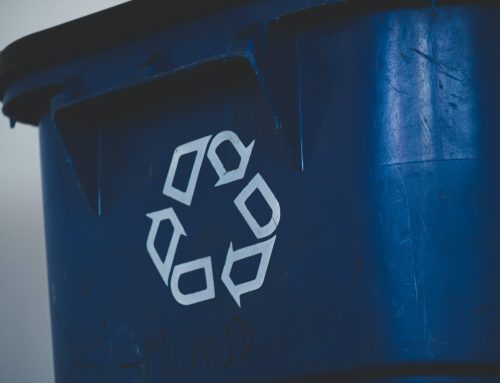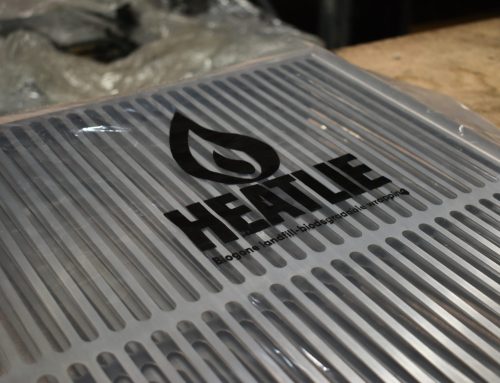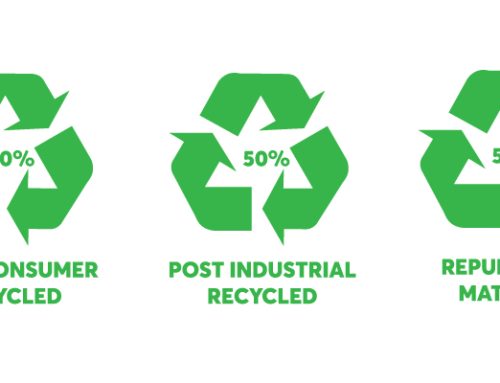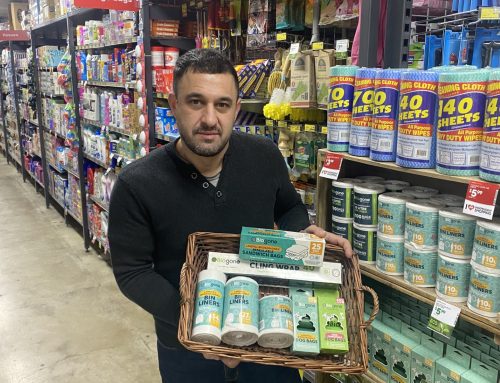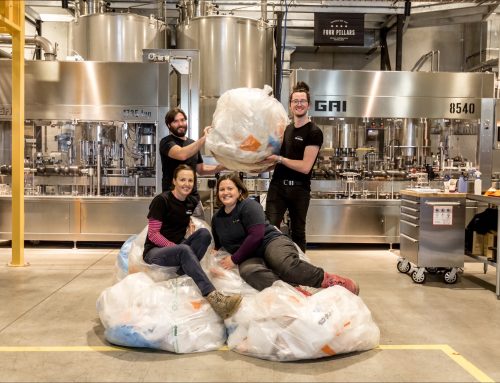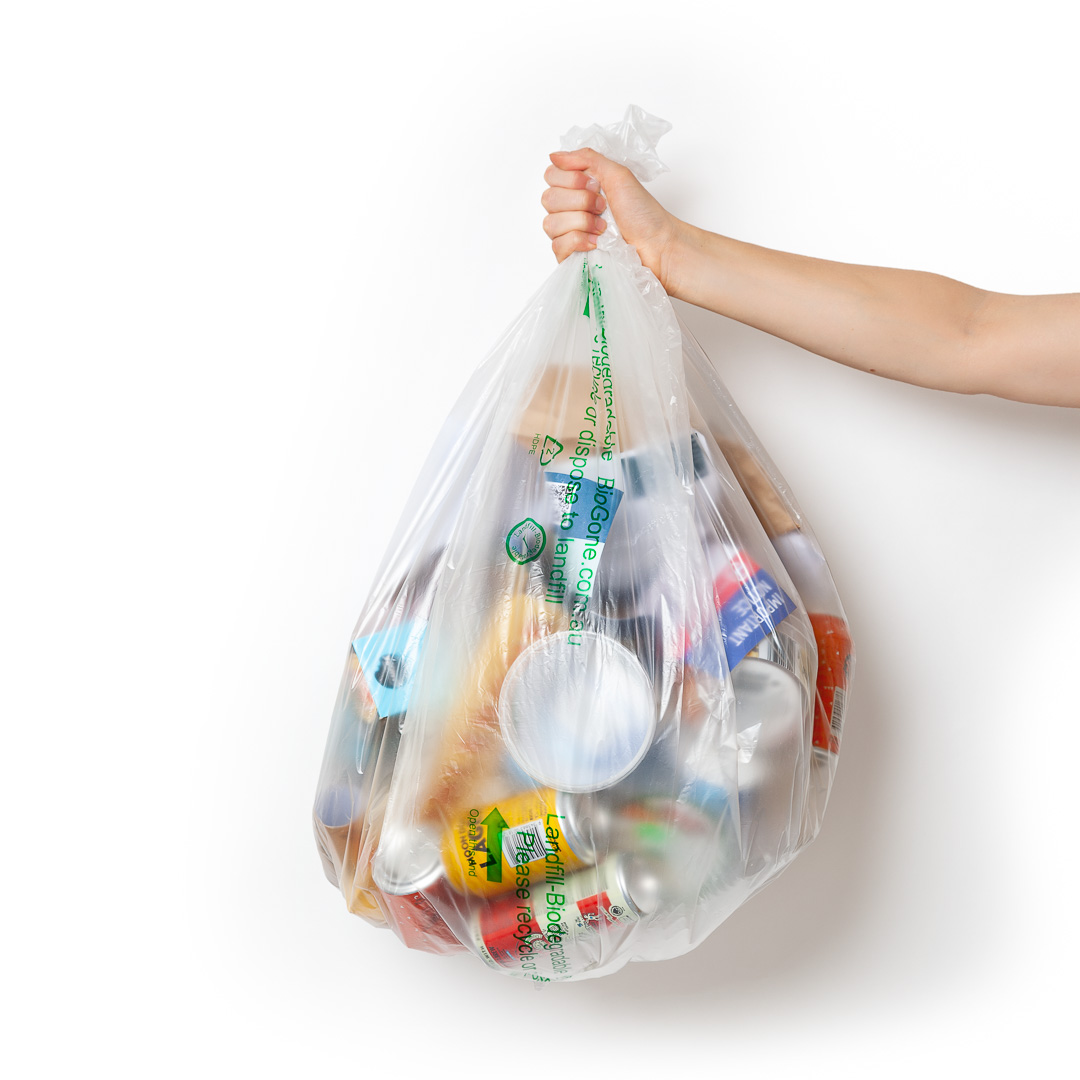
Photo Note: Contents in the bin liner are recyclable, the bin liner is not and should be recycled via REDcycle or disposed of in a rubbish bin.
Over the last few years, there’s been a clear change in utilising compostable plastics as well as biodegradable plastic packaging rather than conventional plastic to reduce plastic pollution in our environment.
By reducing the amount of plastic waste, food waste and compostable waste, greenhouse gas emissions can be controlled and reduced. However, it’s important to understand how Biogone’s landfill-biodegradable plastics and compostable plastics break down over time and how our disposal plays an important role.
Does biodegradable plastic really break down?
Biogone’s landfill-biodegradable packaging is recyclable but when it can’t be recycled, it needs to be disposed to a landfill for biodegradation to begin.
When the plastic is exposed to a naturally occurring microbe-rich environment, such as a landfill, the organic additive attracts microbes to the plastic and they start to digest it. As they do this, the enzymes (the microbes secrete) break the carbon bonds in the plastic molecule allowing the microbes to digest them for their energy. As more enzymes are secreted, more atoms are removed from the plastic molecule (called depolymerisation), which the microbes can digest.
Landfill-biodegradable plastic can be recycled through REDcycle or any other plastic recycler that takes soft plastic or disposed of in a general rubbish bin and not littered.
Once in landfill, the plastic biodegrades at a rate approximately 90+% faster than conventional plastics, to a humus-like material (organic matter) which is a natural plant fertiliser and biogas. The plastic does not fragment into microplastics during biodegradation.
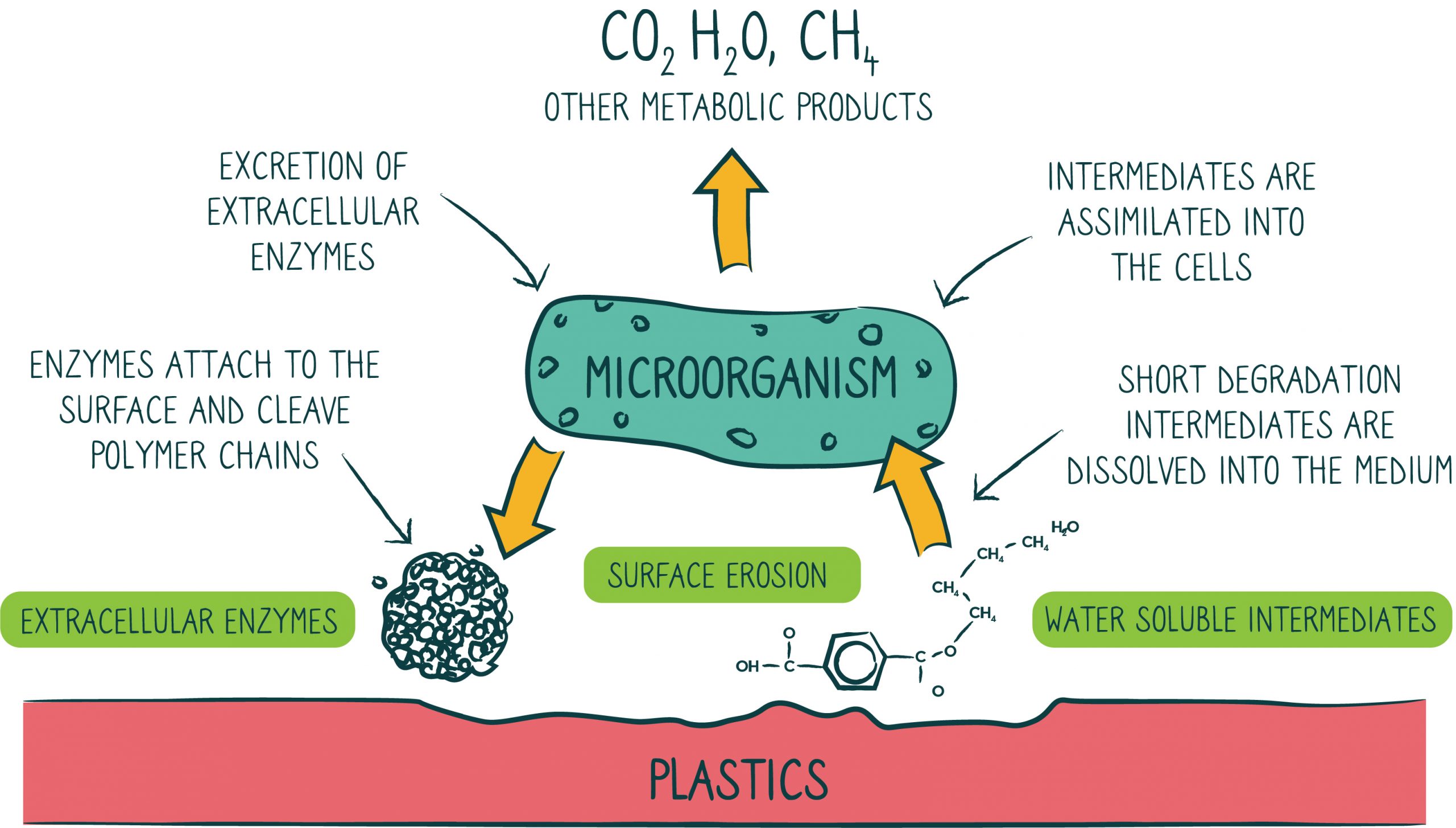
From Mueller, R.J., Biodegradability of polymers: Regulations and methods for testing, in Biopolymers, Steinbuchel, A., Ed., vol. 10., Wiley-VCH, Weinheim, Germany, 2003.)
Biogone provides a more plastic smart solution to traditional single-use plastic. Biogone’s landfill-biodegradable plastic products have an organic additive that allows it to decompose in a landfill over tens of years – not hundreds.
Does biodegradable plastic break down in landfills?
Not all biodegradable plastics decompose in landfills. When you’re making purchasing decisions for biodegradable products, look for biodegradable plastics that have specific labels stating that they’re ‘landfill-biodegradable’.
Other common ‘degradable’ labels include ‘oxo-degradable,’ which is a very different process and fragments down into microplastics and is harmful to the environment, wildlife and ecosystems.
Biogone’s landfill-biodegradable products do not feature any degradable additives and from 2022, oxo-degradable technology will be phased out under the 2021 National Plastic Plan.
Does compostable plastic really break down?
There are two types of compostable materials; home compostable and commercially compostable.
Compostable products are made with plant-based materials, such as corn starch and other starch blends rather than fossil fuels. Home compostable plastic also have an extra component in them, PBAT*, which is a highly biodegradable material. This helps the biodegradation process to break down in compostable waste, which allows it to turn into carbon dioxide and compost to be reused in the environment as nutrient-rich soil for plants.
Compostable packaging
Disposal is critical for home and commercial compostable packaging to break down and is different for both technologies for the below reasons:
- Home compostable products cannot be recycled. Based on the contents and residue, it can be disposed of in a home compost bin, commercial compost facility (if the waste collection stream is available) or a general rubbish bin.
- Commercially compostable products cannot be recycled. They need to be collected and sorted by a commercial compost facility. If it cannot be delivered to a commercial compost facility, it will need to go to a landfill, where it will not biodegrade as it needs temperatures of 60 deg C, plenty of oxygen and good moisture levels. If those conditions are not met, the compostable plastic will not biodegrade as the microorganisms need those conditions to live.
If both compostable plastics can be disposed of in a commercial compost facility that meets the Australian Standards; the plastic will eventually convert into carbon dioxide and quality compost, which will make soils richer and more sustainable for the growth of plants and crops.
Biogone’s home compostable range offers the convenience of using single-use plastics while leaving less harm on the environment as it only takes a few months to decompose.
*PBAT (polybutyrate adipate terephthalate) is a biodegradable random copolymer. The co-polymer is available commercially as resin and as a compound with PLA or starch. Today, the building blocks are made from petrochemicals. As a “drop-in” polymer, PBAT resembles LDPE in its properties. The flexibility and toughness of this polymer make it ideal for blending with another biodegradable polymer that is strong and rigid.
Which is the best option?
In summary, it is important to always take into consideration the disposal of biodegradable and compostable packaging.
Biogone’s landfill-biodegradable is the logical solution in most cases as it is recyclable in line with the 2025 National Packaging Targets, but when it cannot be recycled it can be disposed of to a landfill where it will biodegrade.
Alternatively, home compostable packaging is a more eco-friendly option depending on the use and disposal options available but cannot be recycled.
Landfill-biodegradable and home compostable packaging are the plastic smart options to deal with the current rate of 84% of plastic ending up in Australia’s landfills.
Check out Biogone’s landfill-biodegradable packaging and home compostable bags, bin liners, packaging and shipping, cling wrap, gloves and much more!

